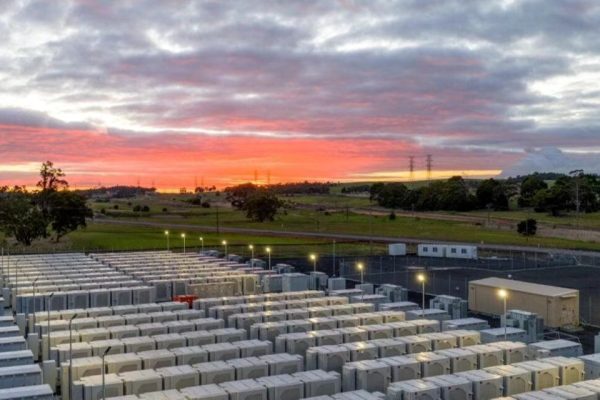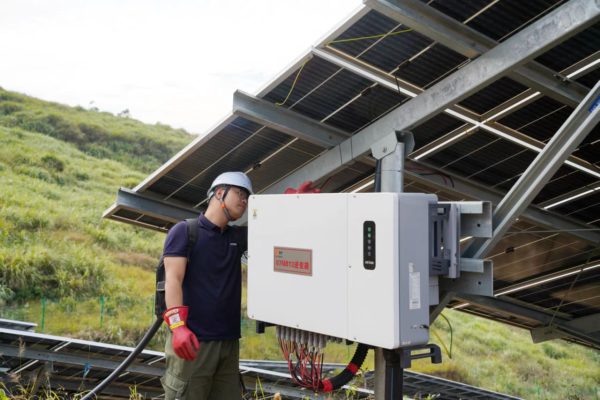Delivering Flexible and Efficient Energy Conversion for Small-Scale PV Clients
1. Why Small Commercial Projects Should Consider Multi-Phase Inverters
For small commercial solar projects (10kW–100kW), developers and system integrators often face a critical challenge: how to ensure reliable power supply while optimizing efficiency and keeping costs down. Multi-phase inverters present a compelling solution in this scenario.
While single-phase inverters are typically used in residential systems, and large-scale commercial systems rely on three-phase setups, small commercial installations exist in a grey area—they often have variable load patterns and unique grid requirements, but lack the budget for high-end infrastructure. That’s where multi-phase inverters come in.
They are especially suited for:
- Sites where power demand is distributed across multiple phases
- Projects requiring both PV and battery integration with three-phase loads
- Locations where grid regulations mandate three-phase output
- Systems expected to scale or adjust in the future
2. What Are Multi-Phase Inverters?
Inverters used in small commercial systems usually fall into one of the following multi-phase categories:
a) Three-Phase Inverters (Three-phase, Four-wire)
These inverters output standard three-phase power (L1, L2, L3 + N), making them ideal for commercial sites.
Key benefits:
- Load balancing across phases
- Support for motors, HVAC, and industrial equipment
- Higher power stability
b) Split-Phase Inverters
More common in North American markets, split-phase inverters provide two 180° phase-shifted outputs (120V/240V systems).
Advantages:
- Supports both 120V and 240V equipment
- Ideal for agricultural, workshop, or hybrid commercial/residential setups
c) Programmable Phase Inverters
Some advanced inverter models offer programmable phase configurations, allowing users to adapt output for local grid codes. This is ideal for exports or off-grid hybrid systems.
3. Real-World Use Cases
a) Retail Stores and Chain Shops (10kW–30kW)
Convenience stores, cafés, pharmacies, and small restaurants often have mixed loads including lighting, refrigeration, POS systems, and air conditioning.
- Multi-phase inverters balance load across circuits
- Energy storage integration reduces peak-time grid dependence
- Ensures business continuity during outages
b) Agriculture and Cold Chain Warehouses (20kW–50kW)
Applications like irrigation, cooling, or water treatment often involve three-phase motors and high startup loads.
- Three-phase inverters handle motor start without grid stress
- Storage support allows power shifting during off-peak hours
- Direct PV input reduces conversion losses
c) Remote Microgrids or Community Power Systems (30kW–100kW)
In rural or unreliable-grid areas, hybrid systems with solar, batteries, and generators are common.
- Multi-phase inverters enable both grid-tied and off-grid functionality
- Multiple inverters can operate in parallel
- Compatible with lithium, lead-acid, or sodium batteries
4. Key Benefits of Multi-Phase Inverters for Small-Scale Clients
Small commercial operators prioritize cost-effectiveness, reliability, and adaptability. Multi-phase inverters directly support these goals:
✅ Flexible System Design
- Compatible with various wiring types (Y/Δ)
- Easy integration with smart meters, EMS, and batteries
- Adaptable to international grid standards (ideal for exporters)
✅ Lower Overall Costs
- Fewer units needed compared to using multiple single-phase inverters
- Lower cabling, installation, and commissioning expenses
- Smaller physical footprint and easier maintenance
✅ Grid Compliance Made Easier
- Many grid authorities require 3-phase output for commercial systems
- Pre-programmed standards simplify inspection and approval
✅ Improved Stability
- Minimizes risks of phase imbalance, breaker trips, or overloads
- Smart phase balancing for mixed load conditions
5. How to Choose the Right Multi-Phase Inverter
Depending on project size and application, here are some general recommendations:
| Project Type | Suggested Inverter Type | Notes |
|---|---|---|
| Single store (<30kW) | Compact three-phase (10–30kW) | Space-efficient, cost-effective |
| Mixed-load systems (30–50kW) | Three-phase with storage interface | On/off-grid switching support |
| Larger distributed sites | Parallel three-phase inverters | Centralized or modular EMS |
| Export or hybrid systems | Programmable phase inverters | Supports various grid standards |
Notable brands and features (for reference, not promotion):
- Growatt, Solis, GoodWe – grid compliance and cost-effectiveness
- Victron, Deye, SMA – strong in hybrid and off-grid functionality
- Sungrow, Huawei – high integration, smart features, remote monitoring
6. Looking Ahead: The Rise of All-in-One Inverter Solutions
As the industry moves toward “solar + storage + smart control” integration, multi-phase inverters are evolving with:
- Bi-directional energy flow (charge/discharge batteries)
- Multiple MPPTs with direct PV charging
- Native EMS and BMS compatibility
- Virtual Power Plant (VPP) readiness for grid services participation
For small commercial clients, these advancements mean greater control, better ROI, and enhanced energy independence—all within a compact and manageable solution.
7. Empowering Small Projects with Smart Inverter Choices
Multi-phase inverters offer the perfect balance between flexibility and performance for small commercial solar projects. Whether you’re running a retail shop, managing a cold storage unit, or building a hybrid microgrid, the right inverter choice will:
- Simplify your system design
- Support future expansion
- Reduce operational costs
- Ensure long-term system reliability
With the right multi-phase inverter, small-scale clients can unlock commercial-grade performance without the overhead of industrial systems.
If you need help selecting the right inverter for your application, or require a tailored solar + storage solution, feel free to contact our team for expert assistance.









